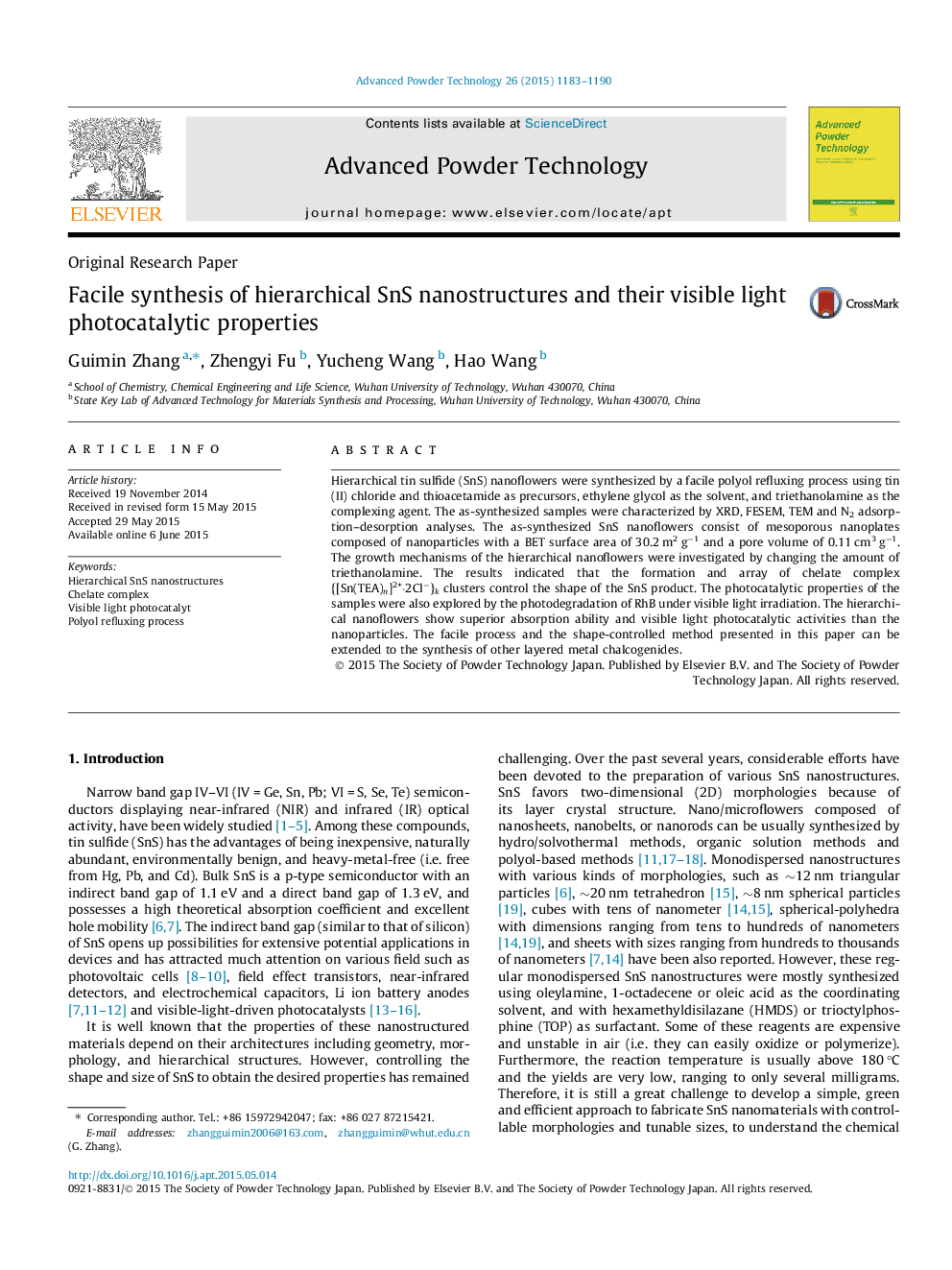| Article ID | Journal | Published Year | Pages | File Type |
|---|---|---|---|---|
| 144356 | Advanced Powder Technology | 2015 | 8 Pages |
•SnS hierarchical nanoflowers were prepared by the facile polyol refluxing process.•SnS nanoflowers consist of mesoporous nanoplates which are composed of nanoparticles.•The multi-hierarchical SnS nanoflowers show the superior photocatalytic activity.•The growth mechanism of SnS nanostructures was proposed.•{[Sn(TEA)n]2+·2Cl−}k clusters control the shape of SnS nanostructures.
Hierarchical tin sulfide (SnS) nanoflowers were synthesized by a facile polyol refluxing process using tin (II) chloride and thioacetamide as precursors, ethylene glycol as the solvent, and triethanolamine as the complexing agent. The as-synthesized samples were characterized by XRD, FESEM, TEM and N2 adsorption–desorption analyses. The as-synthesized SnS nanoflowers consist of mesoporous nanoplates composed of nanoparticles with a BET surface area of 30.2 m2 g−1 and a pore volume of 0.11 cm3 g−1. The growth mechanisms of the hierarchical nanoflowers were investigated by changing the amount of triethanolamine. The results indicated that the formation and array of chelate complex {[Sn(TEA)n]2+·2Cl−}k clusters control the shape of the SnS product. The photocatalytic properties of the samples were also explored by the photodegradation of RhB under visible light irradiation. The hierarchical nanoflowers show superior absorption ability and visible light photocatalytic activities than the nanoparticles. The facile process and the shape-controlled method presented in this paper can be extended to the synthesis of other layered metal chalcogenides.
Graphical abstractFigure optionsDownload full-size imageDownload as PowerPoint slide
